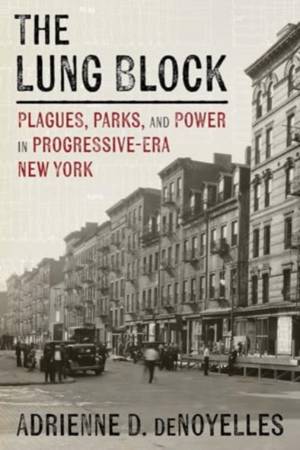
Door een staking bij bpost kan je online bestelling op dit moment iets langer onderweg zijn dan voorzien. Dringend iets nodig? Onze winkels ontvangen jou met open armen!
- Afhalen na 1 uur in een winkel met voorraad
- Gratis thuislevering in België vanaf € 30
- Ruim aanbod met 7 miljoen producten
Door een staking bij bpost kan je online bestelling op dit moment iets langer onderweg zijn dan voorzien. Dringend iets nodig? Onze winkels ontvangen jou met open armen!
- Afhalen na 1 uur in een winkel met voorraad
- Gratis thuislevering in België vanaf € 30
- Ruim aanbod met 7 miljoen producten
Zoeken
€ 83,95
+ 167 punten
Omschrijving
Public health, housing, poverty, and immigration dominated social and political discourse in early twentieth-century New York, much as they do today. The Lower East Side provided an urban environment where infectious disease and other public health concerns flourished. One city block in particular, known in muckraking circles as "The Lung Block," housed four thousand first- and second-generation Americans in dilapidated tenements where deadly tuberculosis spread uninhibited. The Lung Block looks at a 1903 reform crusade to demolish this working-class tenement neighborhood and replace it with a park. Progressive reformers aimed to confront the area's moral and environmental dangers, but their conceptualization of the problem and methods for addressing it placed them into direct conflict with the hand-to-mouth priorities of the residents. The campaign and its eventual failure illuminate the formidable social barriers distancing urban reformers and the marginalized populations they intend to help.
Specificaties
Betrokkenen
- Auteur(s):
- Uitgeverij:
Inhoud
- Aantal bladzijden:
- 264
- Taal:
- Engels
- Reeks:
Eigenschappen
- Productcode (EAN):
- 9780822947868
- Verschijningsdatum:
- 4/06/2024
- Uitvoering:
- Hardcover
- Formaat:
- Genaaid
- Afmetingen:
- 160 mm x 236 mm
- Gewicht:
- 544 g

Alleen bij Standaard Boekhandel
+ 167 punten op je klantenkaart van Standaard Boekhandel
Beoordelingen
We publiceren alleen reviews die voldoen aan de voorwaarden voor reviews. Bekijk onze voorwaarden voor reviews.











